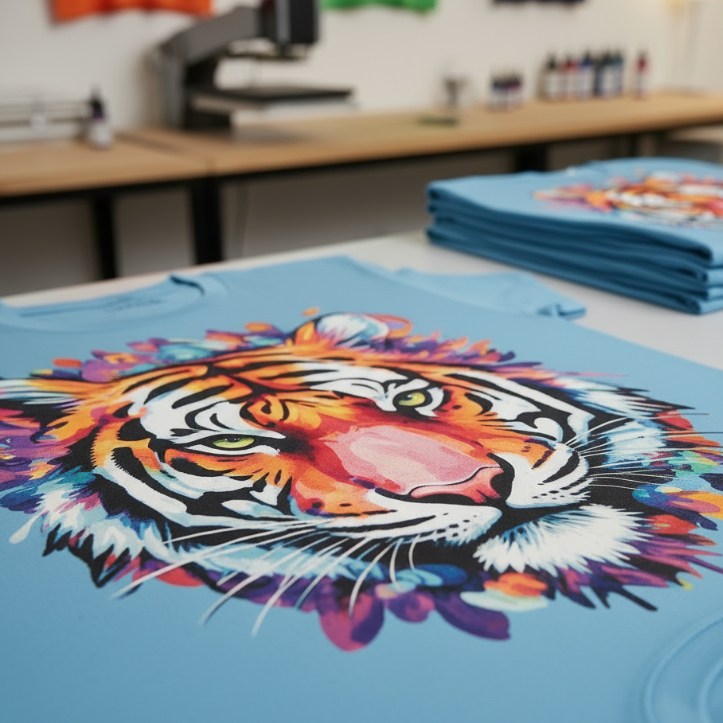You’ll hardly see a branding and marketing plan without video content somewhere in the works. Over 89% of all businesses use some form of video marketing to spread brand awareness, often through informative explanations or humorous social media reels. The few who do not, however, cite an understandable concern: they don’t know where to start. Incorporating branding into video content can be daunting, so let’s find out where you can start and what you can do for your own branded video!
Making brand videos might seem easy at first, but it can be very easy to stray off the path of a brand’s general personality. Unlike concrete details like packaging colors, social media posts, or copywriting, videos are dynamic and made of numerous moving parts. Everything from lighting, background, acting, and script comes into play when incorporating branding into video content, so here are some steps to consider when heading in:
- Build your concept around your audience
We’ve talked about branding plenty of times on Shirtual, so it’s obviously something you have to consider before making your video. Brand colors, personalities, voice, and tone are all important, but they all center back to this main idea: what is your brand’s target audience?
Your video content should be catered specifically to catch the attention of your target audience. Knowing who they are and what they need or like, then, is essential to building a good relationship through your content.
Let’s say you’re selling apparel to a primarily feminine, approximately 25-year-old audience looking to enhance their appearance in the office. What would be these women’s main concerns or struggles in their day-to-day lives?
If they’re ambitious, their concern might be looking powerful and confident in the workplace, which means you can consider creating stylish video content centered around powerful feminine figures wearing your apparel. Alternatively, they might struggle to stylize their wardrobe for the office. This could lead to an explainer tutorial video on what to wear and how to work with a limited wardrobe.
That’s just one example of how you can bring your audience into your video content. What kind of videos would your audience stop to watch on their feed?
- Figure out your video’s content type and style
Once you have a strong understanding of your audience, you should consider how to best convey the content they’d enjoy. There are many different engaging content formats you can try, but brands tend to use these formats for their own purposes:
- Explainer/Educational: Giving information about a common problem potential customers might face. Explainers explain how to use a brand’s product, whereas educational videos tend to be more general knowledge.
- Comedy Skits: Creating a humorous scenario, usually positioning your brand as a solution to an annoying problem.
- Stories: Fictional or real-life accounts that reflect the values and mission of the brand in a narrative format.
- Behind the scenes: A view of the process of making a service or product for the brand.
- Influencer Collabs: Videos using KOLs and influencers to showcase the brand’s products or services.
There are other formats to consider, but pick the one that would help your audience the most. Once you’ve decided on it, you can consider the style–should it be serious? Lighthearted? Witty, simple? What kind of language should it use? These things inevitably go back to audience design and whether or not the style suits your core demographic.
- Write (and rewrite) your script
This part may seem simple at first but usually ends up being quite complicated. Short-form videos tend to work better in the modern day than long-form ones, so your script doesn’t need to be too lengthy–however, it does have to have a clear point.
When writing your script, keep it short and simple and always have a direction. Your first draft should contain the general idea of what you want for your video, and the second draft would be a heavily reduced version with all the fat and possible extraneous details cut out. Your script structure depends heavily on your format, but generally, a good brand video will have at least two of the following details:
- A hook
- A problem and solution
- An idealized look at the brand
- A call to action
- Craft your set design
The production phase is when you can really begin to incorporate branding into video content. Here, you can craft a series of images that remind your audience of what your brand is and what it can do for them.
As such, consider production quality and set design before making your video. If your brand is associated with luxury, for example, you’d want to invest in high-quality cameras and a clean, expensive background, like an office or ballroom. If your brand is meant to be more relatable and friendly, you can consider a casual vertical video format with a regular phone and have a park or outdoor stage as your setting. Lighting, sound design, camera angles, and cinematography should also contribute to the overall look of your brand here.
- Edit accordingly
Editing is a bit like alchemy–many editors are capable of creating completely different products out of the same material. That’s why it’s important to be informed before heading into the editing process.
What video type are you taking inspiration from? How are they usually stylized? Are they fast paced or slow paced? What kind of visual effects and transitions do they use? What is the main focus of each scene? What is the overall goal of the video, and how can your editing best convey that goal? Think of these questions before editing and you should have a strong idea of your video’s final direction in post-production.
- Choose your platform
There’s no point in making a video if no one is going to see it. Choosing the right platform to post your video can make or break your final campaign–you need to know where your audience is most likely to browse their content and how well your type of video would do on that platform.
For example, long-form educational videos are more likely to excel on Youtube, where people frequently look up tutorials and guides in their browser. Meanwhile, short-form humorous content excels on platforms like Instagram or TikTok. Facebook and LinkedIn viewers may enjoy medium-length video content with more narrative or message-heavy scripts.
Creating videos for your next marketing campaign can be challenging, especially if you’re starting out as a brand. If you’re looking for more advice on how to create great branded content, feel free to ask our team at Shirtual–consultations are free!





